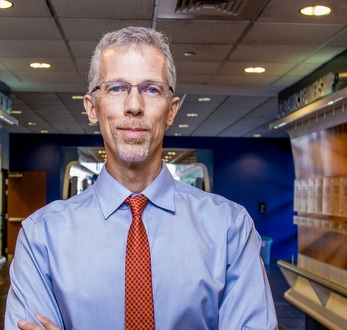Rethinking Innovation and Investment in Autism Services
by Paul Shattuck and Anne Roux*
Posted on
September 23, 2015
Well over a half million youth with autism will age into adulthood over the next decade. There are no reliable estimates of how many will need intensive services, compared to those who can be supported by accommodations and the guidance of family or friends. Our data on outcomes in adulthood, however, documents that autistic adults at all levels of impairment are struggling. Even when people have the cognitive skills to make it through college or find employment, social and adaptive living skills challenge their ability to function independently and find success in accomplishing goals.
The time has come to refocus our conversations about autism services.
It is time to acknowledge that our nation, communities, organizations and families do not have endless resources and never will. Our nation spends billions of dollars every year on childhood interventions for autism. Yet we don’t know what is being done with whom and with what impact.
No successful corporation operates without financial statements. Imagine if a business gathered detailed data on each purchase and sale, but had no clear picture of overall company sales, expenditures, customer satisfaction or assets. The company would quickly go under.
Yet this is exactly how we run many of our programs for individuals with autism. We lack the bigger picture connecting early interventions to adult outcomes. Overall, we don’t know what adult-serving programs are doing, for whom, how often, at what cost, or how what they are doing improves (or doesn’t improve) quality of life. With the exception of waiting list data, we don’t really even know how many people are in need of services, where they live, and how their needs are determined.
Continuing business-as-usual isn’t going to help our communities make the changes adults on the autism spectrum, as well as adults with other types of neurodevelopmental disabilities, are calling for. The time has come to collect and use information, as any sound business would do, to inform a new conversation about innovation and investment.
Our new efforts should begin with emphasizing, as a society, that people on the autism spectrum and their families are valuable members of our communities – with roles to play, dreams to achieve and contributions to make.
In order to support more positive futures and strengthen our communities, our Life Course Outcomes Research Program is pursuing four important next-steps:
- Learn from innovations. Families, service providers and communities are experimenting with innovative solutions for employment, continued education and community living. Our job is to examine and learn from these innovations. What are people trying? What is working? For whom is it working? What play cards can we borrow from other fields and other nations?
- Measure and measure again. We will not know whether we are moving the needle on problems if we don’t measure the right indicators at a societal level and check them repeatedly. Are people able to access needed services? What is the quality and impact of these services? Which programs work best? We also need to better measure how helping people with autism and their families results in stronger communities.
- Commit to life course research. Our understanding of heart disease is based in 70 years of evidence from the Framingham Heart Study and other long-term studies. Similarly, we must plan large, ongoing studies with people on the autism spectrum – to track risks and outcomes into middle and later adulthood – and to determine how what we do early in life affects how life turns out.
- Train new scholars. We need to train new scholars with applied research skills who understand how to improve policies and programs in real-world settings. Ten years from now, maybe one of these new scholars will conduct a study titled "Return on investments in innovative practices for people affected by autism."
Today’s services and research are in place because families took a stand and demanded help – successfully pushing beyond the status quo of their day. Improving adult outcomes will require a historical shift to a mindset emphasizing investment, innovation and community contribution.
 Paul Shattuck, PhD, director of the Life Course Outcomes Research Program, studies experiences and services promoting positive life outcomes for people on the autism spectrum, their families and communities.
Paul Shattuck, PhD, director of the Life Course Outcomes Research Program, studies experiences and services promoting positive life outcomes for people on the autism spectrum, their families and communities.
 Anne Roux, MPH, MA is a nationally renowned autism researcher, author and family advocate. She leads the production of our National Autism Indicators Report series and other publications.
Anne Roux, MPH, MA is a nationally renowned autism researcher, author and family advocate. She leads the production of our National Autism Indicators Report series and other publications.
*The ideas presented in this blog are adapted from our 2014 article Autism: Moving toward an innovation and investment mindset published in JAMA Pediatrics.